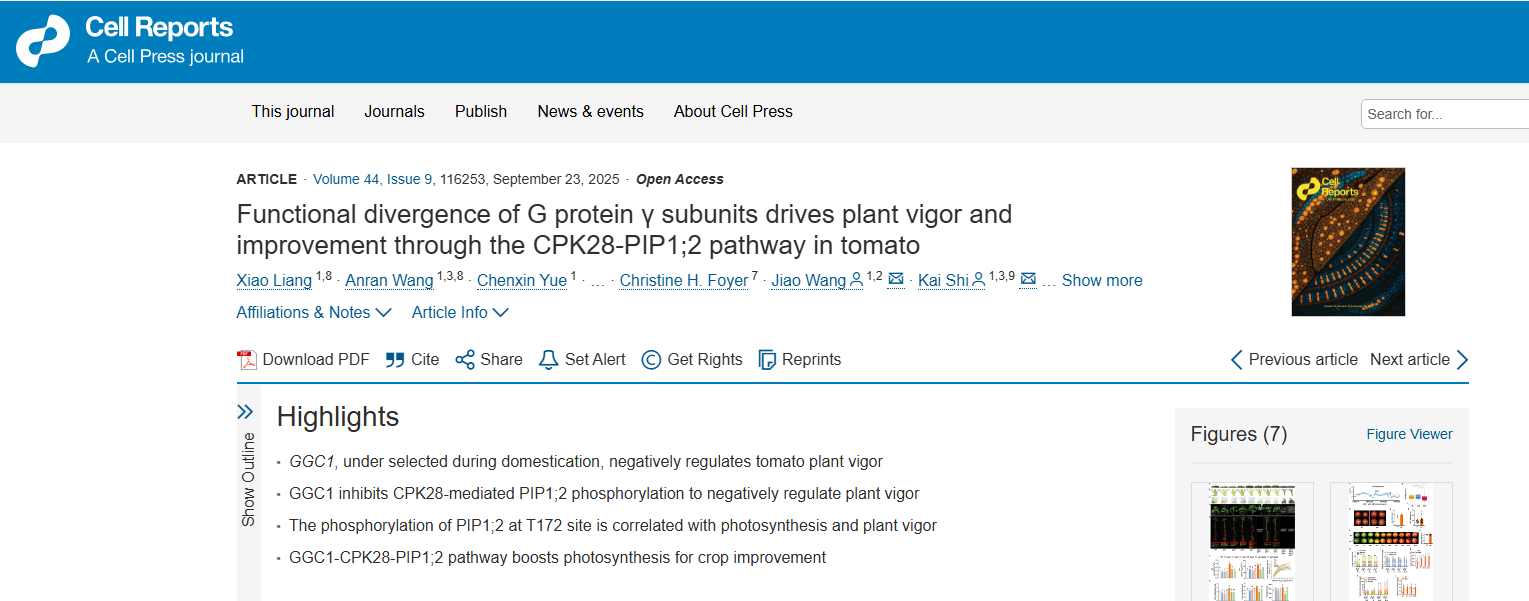AtaGenix Laboratories
AtaGenix Laboratories
Release time: 2025-10-14 View volume: 44
Research Background
Plant vigour directly determines crop yield and photosynthetic efficiency, representing a core focus of global food security and high-yield breeding research. The G protein signalling pathway, a key regulator of plant growth, photosynthesis, and productivity, remains insufficiently understood at the molecular level.
A recent Cell Reports publication from Zhejiang University, titled “Functional divergence of G protein γ subunits drives plant vigour and improvement through the CPK28–PIP1;2 pathway in tomato,” revealed that the G protein γ subunit GGC1 underwent positive selection during tomato domestication. The study demonstrated that GGC1 acts as a negative regulator of plant growth and photosynthesis by suppressing CPK28-mediated phosphorylation of PIP1;2 at Thr172, thereby identifying a previously uncharacterised G protein–mediated signalling cascade, the GGC1–CPK28–PIP1;2 axis, which plays a crucial role in crop growth regulation.

Client Requirements
To verify the regulatory mechanism by which GGC1 influences CPK28-mediated PIP1;2 phosphorylation, the research team required an antibody capable of specifically recognising PIP1;2 phosphorylated at Thr172, suitable for quantitative detection and Western blot validation in tomato mutant samples.
Technical Challenges
1. Site specificity: The antibody needed to distinguish phosphorylation at Thr172 from neighbouring Tyr171.
2. Species specificity: It was essential that the antibody recognised PIP1;2 from tomato (Solanum lycopersicum).
3. Low abundance detection: Phosphorylated proteins are generally present at low levels in plant tissues, necessitating an antibody with high affinity and sensitivity.
AtaGenix Custom Phospho-specific Antibody Solution
To meet the research requirements, AtaGenix conducted sequence analysis of PIP1;2 and evaluated the conservation surrounding the phosphorylation site. A synthetic phosphopeptide containing pThr172 was precisely designed, and the differentiation from the corresponding non-phosphorylated peptide was optimised. A multi-stage process involving immunisation, serum purification, and affinity purification was used to ensure the antibody specifically recognised the phosphorylated form of PIP1;2.

Contribution and Impact
This study provides the first evidence that GGC1 regulates photosynthetic efficiency and plant vigour by suppressing CPK28-mediated phosphorylation of PIP1;2 at Thr172. The anti-PIP1;2 (pT172) phospho-specific antibody custom-developed by AtaGenix provided critical experimental evidence, enabling the researchers to uncover a new molecular pathway governing crop growth.
About Us
AtaGenix Biotechnology is dedicated to providing high-quality protein and antibody development and functional validation services, offering integrated, customised solutions that accelerate scientific discovery.
Learn more about us,please visit: www.atagenix.com
Contact Us
+86-27-87001869
info@atagenix.com
Building C, R & D Building, No. 666, Shendun 4th Road, Donghu New Technology Development Zone, Wuhan

